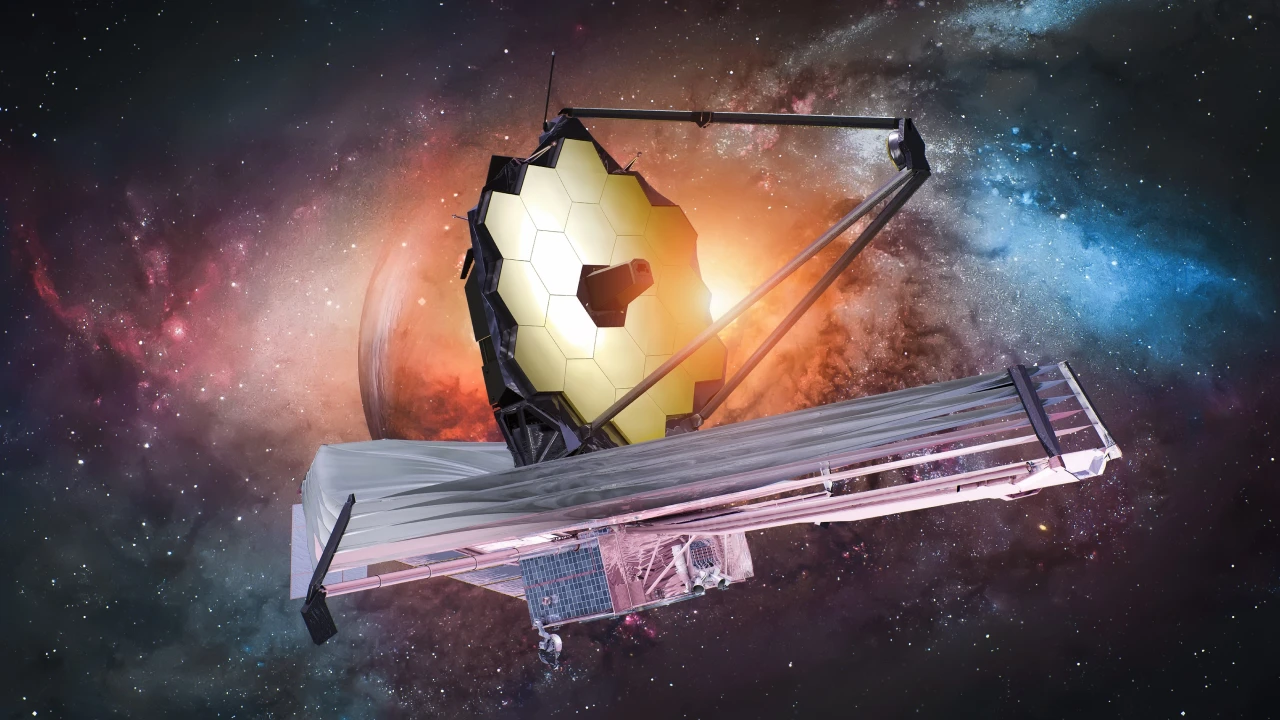James Webb Space Telescope: In a groundbreaking discovery, the James Webb Space Telescope has revealed something that scientists once thought impossible. The news comes on June 29, 2024, marking a historic day for space exploration. Webb, launched into space to explore the universe’s deepest mysteries, has now provided astronomers with unprecedented views of distant galaxies and stars.
James Webb Space Telescope’s Mission
Webb Telescope, named after NASA’s second administrator, James E. Webb, is the most powerful space telescope ever built. It was designed to observe the universe in infrared light, which allows it to see through cosmic dust and study objects that are too faint or distant for other telescopes. This capability gives scientists a new window into the early universe and the formation of stars and galaxies.
The Remarkable Discovery
Recently, Webb made a discovery that has stunned astronomers. It captured detailed images of a galaxy that existed just 500 million years after the Big Bang. This is a time when the universe was still in its infancy, and galaxies were just beginning to form. The images show the galaxy as it was when the universe was only about 3.5% of its current age. Such observations were previously thought to be impossible due to the limitations of earlier telescopes.
Implications for Astronomy
This discovery opens up new avenues for research in astronomy. Scientists can now study the early stages of galaxy formation with unprecedented detail. They can observe how galaxies evolve over billions of years and understand the processes that shaped the universe we see today. This could lead to breakthroughs in our understanding of dark matter, dark energy, and the origins of planetary systems.
Technological Advancements
The success of the Webb Telescope’s mission is a testament to human ingenuity and technological advancement. Webb’s instruments are highly sensitive and precise, allowing it to detect faint signals from distant celestial objects. Its deployment in space, after years of planning and development, has been a triumph for NASA and its international partners.
Challenges and Future Prospects
Despite its success, the Webb Telescope faced many challenges along the way. Its development took longer than expected, and the project’s budget ballooned to over $10 billion. However, the results it has already achieved justify the effort and resources invested. Looking ahead, scientists are eager to see what other discoveries Webb will uncover as it continues its mission in the coming years.
Also Read
- Scorching Heatwave to Grip U.S.: How Hot Will It Get and When Will It End?
- The Goonies Sequel: Is the Long-Awaited Adventure Finally Happening?
- Claude Artifacts: What It Is and How to Use It Effectively
- Bad Monkey Episode 1 Review: A Thrilling Start to a Promising Series
- Gary Oldman Net Worth: A Closer Look at His Wealth and Success
Public Reaction and Interest
The public has shown great interest in Webb’s discoveries. Images and data released by NASA have captivated people around the world, sparking imagination and curiosity about the universe. Many see Webb as a symbol of human exploration and our quest to understand our place in the cosmos.
Educational Opportunities
Webb’s discoveries also provide valuable educational opportunities. Students and educators can use Webb’s observations to learn about astronomy, cosmology, and the scientific method. The telescope’s findings are incorporated into school curricula and public outreach programs, inspiring the next generation of scientists and engineers.
james Webb Space Telescope’s recent discovery marks a significant milestone in the history of astronomy. It has shattered previous limits and opened new frontiers in our quest to understand the universe. As Webb continues to send back data and images, scientists eagerly await the next revelations that will further reshape our understanding of the cosmos.









